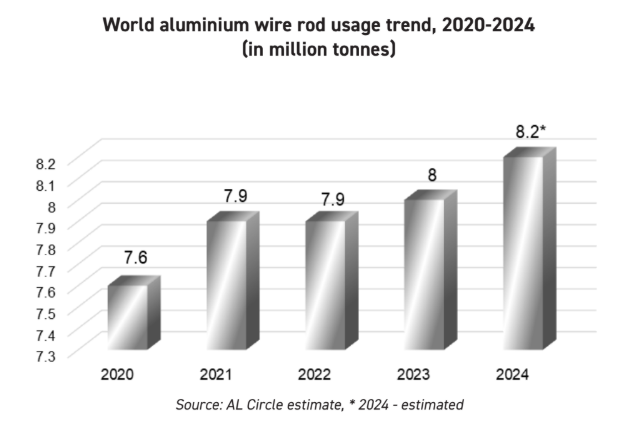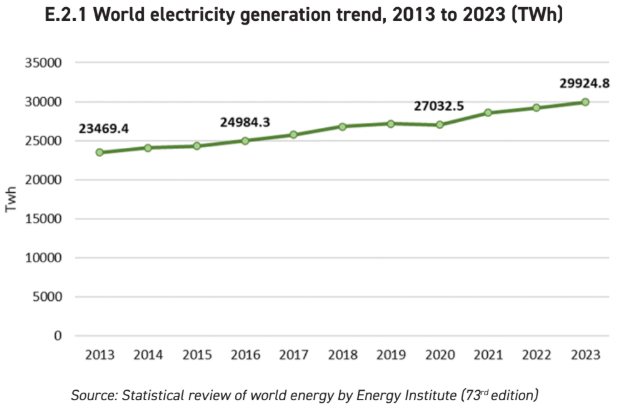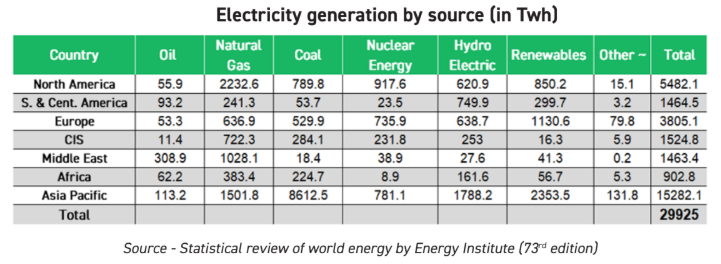In a world rushing toward electrification, one material is quietly transforming the backbone of our power systems: aluminium. Once considered a cheaper alternative to copper, aluminium has rapidly emerged as a strategic material for building the next generation of wires, cables, and conductors. But this isn’t just about cost efficiency anymore—it’s about sustainability, scalability, and system transformation.
If you think aluminium’s role ends at transmission lines, think again. A deep dive into the just-released “Aluminium Wires & Cables: Insights & Forecast to 2030” by AL Circle reveals a story that every industry player, policymaker, and investor must hear.

Let’s explore some of the big shifts—and why this report is a must-read.
A global electrification surge needs a new conductor
As the world pivots to net-zero emissions, governments and industries are investing billions in renewable energy, grid modernisation, and electrification. This transformation is reshaping not only how energy is produced, but how it is transmitted and distributed.

The report highlights that global electricity generation has seen a steep climb between 2013 and 2023, fuelled by wind, solar, and hydropower. These renewable sources require new, more efficient transmission and distribution networks—and aluminium is proving to be the ideal conductor.
Unlike legacy copper grids, aluminium-based wires and cables offer:
- Lighter weight, reducing tower loads and sag
- Excellent corrosion resistance for harsh environments
- Superior cost-performance ratio
- Lower carbon footprint, especially when recycled
In short, aluminium is not just supporting the green transition—it is enabling it.
Lightweight, corrosion-resistant, and now engineered with advanced alloys, aluminium is increasingly displacing copper in high-voltage and medium-voltage applications. And the market trend is clear: aluminium wire rod usage is projected to grow steadily across every major global region through 2030.
Regional insights: Who’s leading, who’s catching up?
One of the most valuable aspects of the report is its granular look at regional trends in aluminium wire and cable usage:
- North America: The U.S. continues modernising its grid, with aluminium now dominating overhead power lines. The report reveals detailed forecasts for the end-use sector, backed by electricity generation trends from 2013 to 2023.
- South America: Brazil and Argentina are upgrading their networks, and aluminium’s affordability is tipping the scale in its favour.
- Europe: The Green Deal and decarbonisation policies are triggering a shift toward more sustainable conductors, including aluminium, especially in offshore wind and EV infrastructure.
- Asia-Pacific: This is where things get really interesting. China, India, and Southeast Asian economies are building out infrastructure at a record pace, and aluminium is their go-to material due to availability and cost performance.
These region-specific forecasts give industry players a crystal ball into growth opportunities and competitive dynamics.

From transmission lines to microgrids: Aluminium is everywhere
Society’s electrification demands a more agile and sustainable power delivery system. This includes:
- Upgrading long-distance transmission lines to connect remote wind and solar farms to cities
- Modernising urban distribution grids to support decentralised energy generation
- Installing rural electrification systems in developing economies
- Integrating battery storage and grid balancing systems
In all these applications, aluminium cables are emerging as the preferred solution. The report details how aluminium’s mechanical and thermal properties make it ideal for overhead lines, underground cabling, and emerging smart grid designs.
Sustainability first: Aluminium’s green credentials
Aluminium wires are not just lighter and more cost-effective—they’re also more sustainable.
The report dives into the primary vs. recycled aluminium trends globally, showing how the industry is rapidly shifting toward low-carbon aluminium. In contrast to copper, aluminium can be recycled indefinitely with minimal loss, and recycled aluminium consumes just 5% of the energy used for primary production.
This makes aluminium wiring the material of choice for sustainable infrastructure projects, from net-zero cities to off-grid renewable installations.
Technology is closing the performance gap
Historically, aluminium was considered inferior to copper in conductivity and flexibility. But that’s changing.
The report highlights how advances in alloying and cable design are overcoming old limitations. Innovations such as aluminium-calcium conductors, improved joint technologies, and multi-strand cable systems are allowing aluminium to match or exceed copper in many green infrastructure applications.
As governments adopt stricter life-cycle assessment and embodied carbon regulations, aluminium’s lower environmental impact is expected to provide a strong competitive advantage.
Building a cleaner tomorrow, one conductor at a time
The energy transition is not just about producing clean power—it’s about moving it efficiently, safely, and sustainably. Aluminium wires and cables are increasingly seen as a key enabler of:
- Net-zero construction projects
- Off-grid renewable systems
- Smart city grids
- Transmission infrastructure
And the global market is taking notice. The report tracks the growth of aluminium wire and cable demand across all these sectors, providing the insights you need to capitalise on this momentum.
Ready to lead the transition?
Aluminium is no longer the underdog in electrical infrastructure. It is the material of the future—a future built on sustainability, circularity, and smart electrification.
To understand where the aluminium wire and cable market is headed—and how you can be part of it—subscribe to the full report today.





